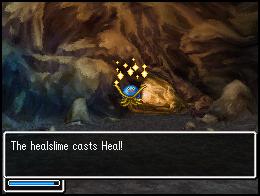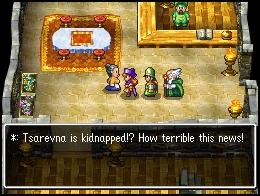
FF4: The After Years Review
Final Fantasy IV: The After Years is the latest sequel to hit the Final Fantasy series, this time continuing on from the ending of the fourth title in the series. This time made by the same team that bought us Final Fantasy IV DS, The After is the opposite of the DS remake that inspired it - it’s a classic, SNES-styled 2D RPG that at a glance could be difficult to distinguish from the original title.
Originally on Japanese Mobile Phones, the title is finally making its way to the West, retaining its episodic content on Nintendo’s WiiWare Download service for Nintendo Wii. Players can buy the base game for 800 Wii Points and then purchase additional tales which tell the stories of individual characters for 300 points a time.
Past this, the finale of the game will also cost 800 points - meaning that the full game will cost 3700 Nintendo Points - almost as much as a classic SNES title back in the day. That’s the bad part - it’s an expensive game.

For this arguably hefty price of entry for a download title fans will get an all new RPG dressed in the clothes of a SNES classic but with many gameplay improvements that we expect of modern-day RPGs.
You’ll get the classic ATB system infused with upgrades that have appeared in other RPGs since the original FF4 as well as some original ideas appearing in this title for the first time.
Straight from Chrono Trigger comes the ‘Band’ ability, a first in Final Fantasy. This allows characters that have a relationship within the plot of the game to ‘band together’ and perform special, powerful moves at the cost of both their full ATB bars.
The game’s main character Ceodore can perform powerful attacks with his mother and father Cecil and Rosa, for example, and in later chapters reunited members of the FF4 cast will be able to band together and use their past relationships to perform devastating attacks.
Another new addition to the world of Final Fantasy IV is the ‘Moon Phase’ mechanic. The moon played a vital role in the plot of FF4 and in The After it finally has some bearing over the gameplay. Throughout play, the moon phase changes from full to waning to new and so on.

Each phase of the moon has an effect on battle mechanics – in one phase, physical attacks are weakened and white magic is strengthened. In other phases, certain enemies will appear that do not appear usually. The moon has a large effect on the gameplay – and sometimes it may be easier to hold off on that difficult dungeon until the moon phase changes.
Outside of these two new systems, the game plays a lot like its predecessor with the same skill learning, ATB battle system and world exploration FF fans will be familiar with from the SNES games with slight interface improvements for the modern gamer.
The graphics of the game are perhaps the most nostalgic area – everything looks just as it did in the original title with slight improvements and the game revisits many locations from the first title which have changed over the 17 in-game years since the original in varying degrees.
All the graphics have been slightly improved from the mobile phone release, with the game now looking much smoother and offering support for Widescreen TVs. It looks good, but we have to say it’s strange seeing a retro, 2D battle scene in widescreen!
The game features all-new artwork of returning characters and newly designed characters from series’ artist Yoshitaka Amano who was responsible for character design in the SNES original.

The soundtrack is mostly comprised of rearranged versions of classics from FF4 by Nobuo Uematsu but also has some new tracks all arranged by Junya Nakano which help to give new musical motifs to the new elements in the FF4 universe.
The difficulty feels similar to the other SNES-era FF titles – fairly standard, with some grinding required for some particularly difficult bosses at certain stages. Even the difficulty level of the SNES era appears to have been lovingly recreated for this retro FF tribute.
The full game should be as long if not longer than the original Final Fantasy IV, made up of four separate acts each with several stories within them, each following the adventures of an original FF4 cast member 20 years on.
Taking place roughly 17 years after the events of FF4, The After Years is incredibly loyal to the original story and vision shown in the original game. Much of the game centers about Ceodore, son of FF4 leads Cecil and Rosa, who is currently in-training to join The Red Wings.
A new threat appears and the storyline of the game unfolds both from the view of the lead Ceodore and through famous faces we already know from FF4. The plot is classic FF – and while not as complex or interesting as newer titles in the series – perfectly suitable for this retro reminiscence.

That’s what describes this game best, really – it’s a retro reminiscence. It’s a love letter to the SNES era of Square Enix, JRPGs and of course Final Fantasy – a time when things were simpler.
In truth, Final Fantasy IV: The After Years doesn’t bring much new to the table – take away the already old Band system and the Moon Phase system and the game is essentially Final Fantasy IV with an all-new plot.
This isn’t all that bad though – in this day and age it’s a refreshing, pleasant change of pace and a perfect little tribute to the fans of and people who made the FFs of old.
The only shame is the price – sold in episodes, The After Years is an expensive investment for any FF fan made over literal 'micro' transactions that very quickly add up and become macro.
It’s an old fashioned, fun Final Fantasy romp, and we can’t argue with that. It could use some smoother visuals and some additional modern gameplay elements, but perhaps that would ruin the retro charm.
As it is, this is bound to leave FF fans and those wishing to live the retro JRPG experience for the first time begging for more.